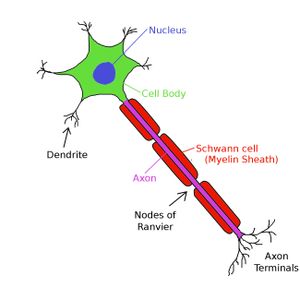VIDEO SKELTAL SYSTEM
VIDEO VIDEO VIDEO VIDEO VIDEO VIDEO VIDEO MUSCULAR SYSTEM
VIDEO VIDEO VIDEO HEMATOLOGY
VIDEO VIDEO VIDEO BLOOD VASCULAR SYSTEM
VIDEO VIDEO LYMPHATIC SYSTEM
VIDEO RESPIRATION SYSTEM VIDEO REVIEW LECTURE
VIDEO RESPIRATION SYSTEM
VIDEO NEUROHISTOLOGY
VIDEO VIDEO DEVELOPMENT OF NERVOUS SYSTEM
VIDEO VIDEO PERIPHERAL NERVES
VIDEO SENSORY AND MOTOR PATHWAYS
VIDEO MOTOR PATHWAYS AND FOREBRAIN
VIDEO FOREBRAIN
VIDEO EYE
VIDEO REVIEW LECTURE
VIDEO DIGESTIVE SYSTEM
VIDEO VIDEO VIDEO URINARY SYSTEM
VIDEO ENDOCRINE SYSTEM
VIDEO VIDEO FEMALE REPRODUCTIVE SYSTEM
VIDEO MALE REPRODUCTIVE SYSTEM
VIDEO INTEGUMENTARY SYSTEM
VIDEO 28.37206 77.318543
Permanent link to this post (57 words, 1 image, estimated 14 secs reading time)
The Respiratory System is Designed to Bring in Oxygen and Remove Carbon Dioxide
A person with an average ventilation rate of 7.5 L/min will breathe in and out 10,800 liters of gas each day
From this gas the person will take in about 420 liters of oxygen (19 moles/day) and will give out about 340 liters of carbon dioxide (15 moles/day)
The ratio of CO2 expired/O2 inspired is called the respiratory quotient (RQ)
RQ = CO2 out/O2 in = 340/420 = 0.81
In cellular respiration of glucose CO2 out = O2 in; RQ = 1
BASIC CLINICAL SCIENCES , HUMAN ANATOMY & PHYSIOLOGY , TUTORIALS Add new tag , Breathing , Lung volumes , Pleural cavity , Respiratory System , Thoracic cavity , United States , Ventilation , Vital capacity
The Skin is a Composite of 3 Layers
This diagram is from the copyright-free collection, The Sourcebook of Medical Illustration , edited by Peter Cull (Park Ridge, NJ: Parthenon, 1989).
Epidermis: outermost layer, mostly dead keratinized cells (stratified squamous epithelium ). No blood vessels, gets nutrition from dermis. Dead cells slough off and are replaced by dividing cells in the stratum basale. Half life of skin cells about 35 days.
Dermis: contains blood vessels, nerves, sensory receptors for touch, pressure, hot, cold, pain. Also has hair follicles and sweat glands. All this is imbedded in fibrous connective tissue.
This is a preview of SKIN BARRIER AND TEMPERATURE CONTROL IN HUMAN BODY-PHYSIOLOGY TUTORIAL.
Read the full post (1228 words, 4 images, estimated 4:55 mins reading time)
Image via Wikipedia
Nerves Have Axons, Dendrites and Cell Bodies
Nerve cells are designed to respond to stimuli and transmit information over long distances
Nerve cell has 3 parts:
Cell body :
Has single nucleus
Has most of nerve cell metabolism, especially protein synthesis
Proteins made in cell body must be delivered to other parts of nerve
Axon:
Long cylinder, designed to transmit an electrical impulse
Can be several meters long in vertebrates (giraffe axons go from head to tip of spine)
Has axonal transport system for delivering proteins to ends of cell
HUMAN ANATOMY & PHYSIOLOGY , TUTORIALS Action potential , Add new tag , Axon , Central nervous system , Health , Neuron , Peripheral nervous system , Soma , Spinal cord , Spinal cord injury
Concentrations of Drugs in the Blood are a Balance Between Input and Output
The concentrations of all chemicals in your body are the result of a balance between input and output.
For drugs the input is usually a steady injection through an intravenous (IV) line or a periodic uptake through pills taken at regular intervals.
The output of drugs is mainly through 2 organs, the liver and kidney .
When the output equals the input a steady-state is attained and the concentration will no longer change:
This is a preview of How the Body Handles Drugs USING Kidney and Liver-INTERESTING FACT.
Read the full post (793 words, 5 images, estimated 3:10 mins reading time)

![Reblog this post [with Zemanta]](http://img.zemanta.com/reblog_e.png?x-id=8f9cca6a-6fdb-465d-be8a-485c684b4b17)
![Reblog this post [with Zemanta]](http://img.zemanta.com/reblog_e.png?x-id=e3f60bca-50a2-4211-adff-6f0b48d592db)


